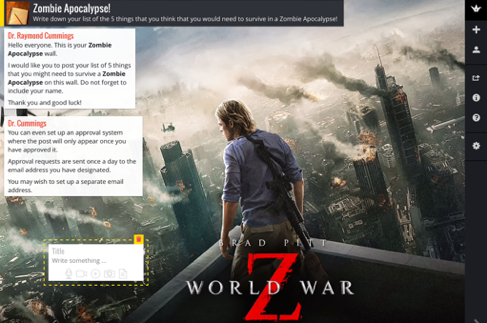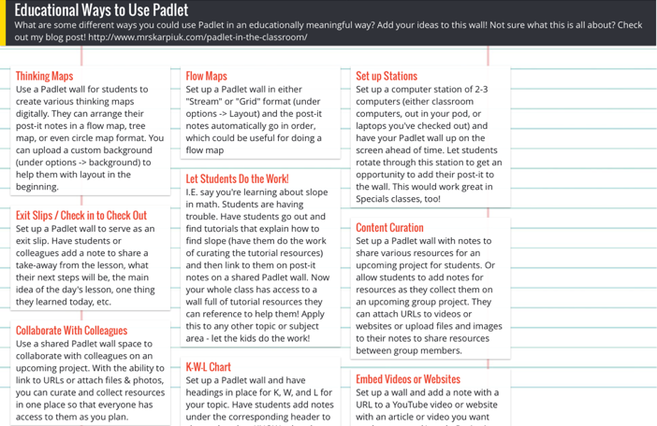
The advantages of Padlet are many. Teachers can create a virtual wall that can be accessed via a web address. They can create the wall using a number of hosted templates. Alternatively, it is possible to customise a wall with a particular image in order to make it more relevant to the topic of a lesson. Furthermore, a teacher can set their wall up in such a way that they can review the posts of their students before they are added to it. In this way, the possibility of a student adding inappropriate comments is removed.
The posts themselves can take a number of forms. It is possible to:
- Write a message;
- Record an audio message;
- Record a video;
- Add a url;
- Attach a document.
The trick to using Padlet, therefore, is to make sure that you find a valid reason for using it. It would be too easy to make use of it in the worst possible way, as a fad or simply for the sake of it. The website's potential necessitates that it be used well and for the best possible pedagogical reasons. If,like me, you find yourself considering when and how to best use it during the development of a scheme of work, there are a number of websites that feature articles on how to best use this resource in your classroom. There are also several Padlet pages, such as the one above, that offer similar inventive ideas for its use.
Padlet is a facility that I have wanted to use for a while. I have been trying to find the right topic within which to deploy it as effectively as possible. As a virtual display board for a class' haiku? As a performance site for each student in a class delivering their favourite line from Shakespeare's Macbeth? As a posting board of what students believe to be Moriarty's reason for choosing a life of crime? Survival tips for the inevitable Zombie Apocalypse? If you have any ideas, please, let me know.



 RSS Feed
RSS Feed

